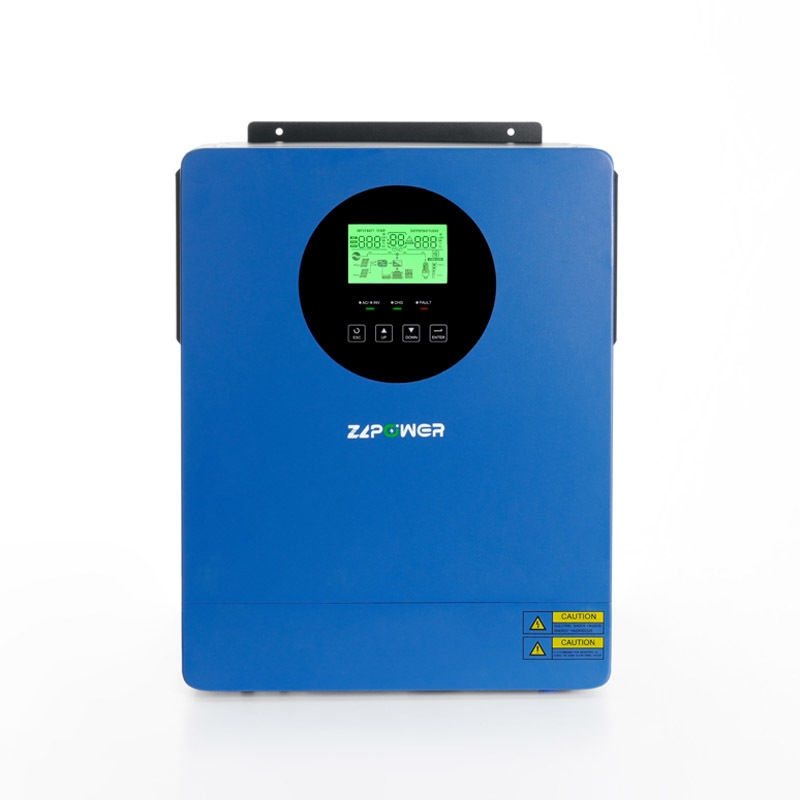

Want to cut costs on solar inverter setups in 2025? You need a clever plan. Focus on technology, timing, and policies. Understand costs. Pick the right inverter. Use government perks. Buy smart. Add energy storage wisely. This keeps installations affordable. You won’t lose quality or reliability.
Solar inverter setup costs come from many things. Equipment is a big part. Labor matters too. Permits add up. Extra parts play a role. Equipment means the inverter itself. It also includes add-ons like brackets or communication gadgets. Take hybrid inverters, like the PVG 3.5KW, 5.2KW, or 5.5KW Off-Grid Hybrid Solar Inverter. They have built-in MPPT controllers. They work without batteries. This cuts the need for extra stuff.
Labor costs change by place. They often take 10-20% of the total bill. Some sites need rented tools. Think scaffolding or lifting gear. Permits cost more. Local rules decide these fees.
Tech keeps getting better. Production is growing. So, inverter prices may dip a bit by 2025. But fancy models with cool features? They might stay costly. Things like anti-dust kits for rough spots or dual outputs for splitting key and minor loads add value.
String inverters are cheaper at first. But if one panel gets shade, they lose power. Microinverters help each panel shine. They cost more, though. Hybrid inverters, like ZLPOWER’s, mix grid-tied and off-grid perks. They support batteries. This flexibility can make up for higher starting costs over time.
The hybrid 3.5KW, 4KW, 5.5KW, and 6KW inverter/charger blends inverter, solar charger, and battery charger roles. It gives steady power in a small package.
For budget-friendly setups, check inverter performance. Look at efficiency. It’s usually over 90%. Check surge capacity, like 11000VA for PVG models. Look at MPPT voltage range too. Match these to your wallet.
Too big or too small an inverter causes trouble. It can raise costs. Pick one that fits your system. For example, the PVG 5500-48, rated at 5500VA/5500W, works great for mid-sized homes.

Incentives are awesome for saving cash. Many places give federal tax credits. The U.S. Investment Tax Credit is one. States offer rebates too. Some give rewards based on performance. These boost your savings.
These perks can cover 30% or more of costs. It depends on where you live. They work for panels, inverters, and batteries. Especially if you use certified gear from brands like ZLPOWER. They meet ISO9001, ISO14001, and ISO45001 standards.
New rules in 2025 might tweak fees or grid benefits. Stay in the know. This helps you dodge surprise costs. It also helps you grab savings during permits.
Doing lots of setups? Buy in bulk to save. Negotiate with suppliers. ZLPOWER has inverters from 1KVA to over 800KVA. They’re great for big orders.
Plan installs for quiet times, like winter. Labor costs drop. Installers have less work then.
Certified installers get it right from day one. This saves on future fixes. It keeps warranties valid. ZLPOWER lives by technology first, service for optimal. That’s their promise.
Batteries cost more upfront. But they save on bills. They help with time-of-use rates or backups. Lithium batteries last longer. They go up to 3,500 cycles. That’s better than old-school lead-acid ones.
Hybrid systems store extra power. You don’t sell it cheap to the grid. This means you use more of what you make. ZLPOWER’s hybrid inverters have smart controllers. Their anti-dust kits keep things running in tough spots. This adds value over time.
Grid issues are growing worldwide. Scalable hybrid systems keep you safe. They store power for when you need it most.
A trusted brand is key for cheap, high-quality setups. ZLPOWER began in 2007. It’s a high-tech firm. They focus on R&D and sales for UPS systems and solar inverters up to 800KVA. These fit homes, factories, telecom hubs, and public projects.
With CE, UL, and ETL certifications, ZLPOWER sells to Europe, North America, and Africa. Our motto is that Customer first, tech first, top service. We offer solid support before and after you buy.
.jpg)
Need high performance on a budget? Want off-grid options and smart battery control? ZLPOWER delivers. Our tech is innovative and reliable.
From tiny units like the PVN1000VA for small homes to big split-phase models like the GSII series for estates or factories, ZLPOWER has it all. Our systems save money long-term with clever energy management.
Check our full lineup today. Want a project that’s green and budget-friendly? ZLPOWER makes it simple for years to come.
A: Costs come from equipment (like the inverter and accessories), labor, permits, and extra tools like scaffolding. Labor can be 10-20% of the bill, and permits vary by local rules. Choosing efficient gear, like hybrid inverters, can cut extra expenses.
A: String inverters are cheapest upfront but lose efficiency if panels are shaded. Microinverters cost more but boost each panel’s output. Hybrid inverters, like ZLPOWER’s, mix grid and off-grid features with battery support, offering long-term savings despite higher initial costs.
A: Yes, prices may drop slightly in 2025 due to better tech and larger production. However, advanced models with features like anti-dust kits or dual outputs might stay pricier because of their added benefits.